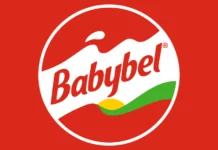According to research reports from MRFR, the Molded Pulp Packaging Market, as outlined in the “Molded Pulp Packaging Market Research Report Information by Product, Source, Region, Molded Type, and End Users – Forecast Till 2032,” is poised for substantial growth from 2022 to 2032, with a robust compound annual growth rate (CAGR) of approximately 4.50%. Projections indicate that the market’s revenue share is expected to reach USD 7.0 Billion by the end of 2032, compared to its value of approximately USD 4.7 Billion in 2022.
Market Overview:
The Molded Pulp Packaging Market encompasses the global industry engaged in the production, distribution, and utilization of packaging materials crafted from molded pulp. Molded pulp is an environmentally sustainable material derived from recycled paper waste or other biodegradable fibers, such as sugarcane bagasse or bamboo. In recent years, the Molded Pulp Packaging Market has witnessed significant growth driven by rising environmental concerns, a growing demand for sustainable packaging solutions, and increased adoption of eco-friendly practices by businesses and consumers alike. With sustainability taking center stage in the packaging industry, the molded pulp packaging market is expected to continue its expansion in the years to come.
Competitive Landscape:
Leading players in the Molded Pulp Packaging Market worldwide include:
- Brodrene Hartmann A/S
- Genpak, LLC
- Huhtamako Oyj
- Eco-Products, Inc
- CKF Inc.
- Pro-Pac Packaging Limited
- Thermoform Engineered Quality LLC
- Fabri-Kal
- Sabert Corporation
- Henry Molded Products, Inc
- And others.
Market Drivers:
The global Molded Pulp Packaging industry has seen remarkable advancements, primarily driven by the increasing demand for convenient and sustainable packaging solutions worldwide. Additionally, factors such as ongoing innovations in molded fiber products, heightened demand from the electronics, food packaging, and healthcare sectors, substantial cost savings, and fluctuations in oil prices are expected to positively influence the market’s growth in the coming years.
Segment Analysis:
Among the various types, the transfer molded segment held the top position in the global molded pulp packaging market in 2022. This is primarily attributed to the material’s hygroscopic properties and air permeability, which enhance the shelf life of beverages and food products during transport. Molded pulp packaging is particularly effective in protecting items like eggs, vegetables, fruits, and alcoholic and non-alcoholic beverages from shocks and damage.
Among the different sources, wood pulp emerged as the dominant segment in the global molded pulp packaging market in 2022 due to its widespread availability, versatility, and affordability. Wood pulp molded packaging can be adapted to various shapes, sizes, and depths to accommodate a variety of food items, making it a popular choice among packaging manufacturers across different industries.
In terms of products, trays held the leading position in the global molded pulp packaging market in 2022. These trays are extensively used in the food packaging and food service industries, particularly for packaging eggs in retail distribution systems. Molded pulp trays provide excellent protection, preventing product breakage and ensuring product security.
Among end-users, the food packaging segment secured the top spot in the global molded pulp packaging market in 2022, primarily due to its cost-effectiveness and cushioning capabilities.
Regional Analysis:
The research reports by MRFR highlight regional insights for North America, Europe, Asia-Pacific, and the Rest of the World.
In 2022, the Asia-Pacific region led the global Molded Pulp Packaging industry, contributing nearly 45.80% to the market. India, China, and Indonesia were prominent contributors to the region’s growth. China’s Molded Pulp Packaging Market held the largest market share, while India exhibited the fastest growth in the Asia-Pacific region. This regional expansion was bolstered by a thriving food and beverage industry and a growing electronics market, driven by the disposable income of the region’s vast consumer population. Notably, the Asia-Pacific region is home to major electronics companies like Xiaomi, Lenovo, Huawei Technologies Co., Ltd., and others.




























